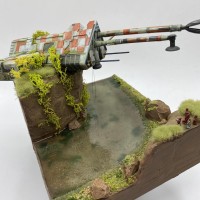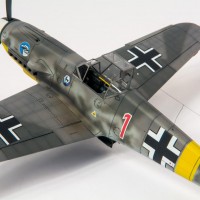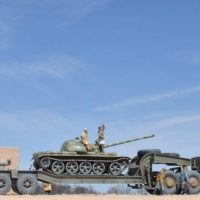Today is National Medal of Honor Day in the U.S.
Here are the citations for the Medal of Honor of people I have known or been fortunate to write about (I am currently writing about the Chosin campaign, which covers most of the USMC MoH citations, who were people I was privileged to meet and interview). I am also including the citation of Warrant Officer Michael J. Novosel - I spent two years trying to turn his citation into a movie:
The President of the United States in the name of The Congress takes pleasure in presenting the Medal of Honor to
McCAMPBELL, DAVID
Rank and Organization: Commander, United States Navy, Air Group 15. Place and Date: First and second battles of the Philippine Sea, June 19, 1944.
Citation:
For conspicuous gallantry and intrepidity at the risk of his life above and beyond the call of duty as commander, Air Group 15, during combat against enemy Japanese aerial forces in the first and second battles of the Philippine Sea. An inspiring leader, fighting boldly in the face of terrific odds, Comdr. McCampbell led his fighter planes against a force of 80 Japanese carrier-based aircraft bearing down on our fleet on June 19, 1944. Striking fiercely in valiant defense of our surface force, he personally destroyed 7 hostile planes during this single engagement in which the outnumbering attack force was utterly routed and virtually annihilated. During a major fleet engagement with the enemy on October 24, Comdr. McCampbell, assisted by but 1 plane, intercepted and daringly attacked a formation of 60 hostile land-based craft approaching our forces. Fighting desperately but with superb skill against such overwhelming airpower, he shot down 9 Japanese planes and, completely disorganizing the enemy group, forced the remainder to abandon the attack before a single aircraft could reach the fleet. His great personal valor and indomitable spirit of aggression under extremely perilous combat conditions reflect the highest credit upon Comdr. McCampbell and the U.S. Naval Service.
From the Battle of Toktong Pass, the bloodiest small-unit action in American history (100% casualties WIA and KIA):
The President of the United States in the name of The Congress takes pleasure in presenting the MEDAL OF HONOR to
CAPTAIN WILLIAM E. BARBER
UNITED STATES MARINE CORPS
for service as set forth in the following CITATION:
For conspicuous gallantry and intrepidity at the risk of his life above and beyond the call of duty as Commanding Officer of Company F, Second Battalion, Seventh Marines, First Marine Division (Reinforced), in action against enemy aggressor forces in Korea from November 28, to December 2, 1950. Assigned to defend a three-mile mountain pass along the division's main supply line and commanding the only route of approach in the march from Yudam-Ni to Hagaru-ri, Captain Barber took position with his battle weary troops and, before nightfall, had dug in and set up a defense along the frozen snow-covered hillside. When a force of estimated regimental strength savagely attacked during the night, inflicting heavy casualties and finally surrounding his position following a bitterly fought seven-hour conflict, Captain Barber, after repulsing the enemy, gave assurance that he could hold if supplied by air drops and requested permission to stand fast when orders were received by radio to fight his way back to a relieving force after two reinforcing units had been driven back under fierce resistance in their attempts to reach the isolated troops. Aware that leaving the position would sever contact with the 8,000 Marines trapped at Yudam-ni and jeopardize their chances of joining the 3,000 more awaiting their arrival in Hagaru-ri for the continued drive to the sea, he chose to risk loss of his command rather than sacrifice more men if the enemy seized control and forced a renewed battle to regain the position, or abandon his many wounded who were unable to walk. Although severely wounded in the leg the early morning of the 29th, Captain Barber continued to maintain personal control, often moving up and down the lines on a stretcher to direct the defense and consistently encouraging and inspiring his men to supreme efforts despite the staggering opposition. Waging desperate battle throughout five days and six nights of repeated onslaughts launched by the fanatical aggressors, he and his heroic command accounted for approximately 1,000 enemy dead in this epic stand in bitter sub-zero weather, and when the company was relieved, only 82 of his original 220 men were able to walk away from the position so valiantly defended against insuperable odds. His profound faith and courage, great personal valor and unwavering fortitude were decisive factors in the successful withdrawal of the division from the deathtrap in the Chosin Reservoir sector and reflect the highest credit upon Captain Barber, his intrepid officers and men and the United States Naval Service. The President of the United States in the name of The Congress takes pride in presenting the MEDAL OF HONOR to
PRIVATE HECTOR A. CAFFERATA, JR.
UNITED STATES MARINE CORPS RESERVE
for service as set forth in the following
CITATION:
For conspicuous gallantry and intrepidity at the risk of his life above and beyond the call of duty while serving as a Rifleman with Company F, Second Battalion, Seventh Marines, First Marine Division (Reinforced), in action against enemy aggressor forces in Korea on 28 November 1950. When all the other members of his fire team became casualties, creating a gap in the lines, during the initial phase of a vicious attack launched by a fanatical enemy of regimental strength against his company's hill position, Private CAFFERATA waged a lone battle with grenades and rifle fire as the attack gained momentum and the enemy threatened penetration through the gap and endangered the integrity of the entire defensive perimeter. Making a target of himself under the devastating fire from automatic weapons, rifles, grenades and mortars, he maneuvered up and down the line and delivered accurate and effective fire against the onrushing force, killing fifteen, wounding many more and forcing the others to withdraw so that reinforcements could move up and consolidate the position. Again fighting desperately against a renewed onslaught later that same morning when a hostile grenade landed in a shallow entrenchment occupied by wounded Marines, Private CAFFERATA rushed into the gully under heavy fire, seized the deadly missile in his right hand and hurled it free of his comrades before it detonated, severing part of one finger and seriously wounding him in the right hand and arm. Courageously ignoring the intense pain, he staunchly fought on until he was struck by a sniper's bullet and forced to submit to evacuation for medical treatment. Stouthearted and indomitable, Private CAFFERATA, by his fortitude, great personal valor and dauntless perseverance in the face of almost certain death, saved the lives of several of his fellow Marines and contributed essentially to the success achieved by his company in maintaining its defensive position against tremendous odds. His extraordinary heroism throughout was in keeping with the highest traditions of the United States Naval Service. LCOL Ray Davis, who saved the Marines of Fox 2/7:
The President of the United States in the name of The Congress takes pleasure in presenting the Medal of Honor to
DAVIS, RAYMOND G.
Rank and organization: Lieutenant Colonel, U.S. Marine Corps commanding officer, 1st Battalion, 7th Marines, 1st Marine Division (Rein.). Place and date: Vicinity Hagaru-ri, Korea, 1 through 4 December 1950.
Citation:
For conspicuous gallantry and intrepidity at the risk of his life above and beyond the call of duty as commanding officer of the 1st Battalion, in action against enemy aggressor forces. Although keenly aware that the operation involved breaking through a surrounding enemy and advancing 8 miles along primitive icy trails in the bitter cold with every passage disputed by a savage and determined foe, Lt. Col. Davis boldly led his battalion into the attack in a daring attempt to relieve a beleaguered rifle company and to seize, hold, and defend a vital mountain pass controlling the only route available for two marine regiments in danger of being cut off by numerically superior hostile forces during their re-deployment to the port of Hungnam. When the battalion immediately encountered strong opposition from entrenched enemy forces commanding high ground in the path of the advance, he promptly spearheaded his unit in a fierce attack up the steep, ice-covered slopes in the face of withering fire and, personally leading the assault groups in a hand-to-hand encounter, drove the hostile troops from their positions, rested his men, and reconnoitered the area under enemy fire to determine the best route for continuing the mission. Always in the thick of the fighting, Lt. Col. Davis led his battalion over three successive ridges in the deep snow in continuous attacks against the enemy and, constantly inspiring and encouraging his men throughout the night, brought his unit to a point within 1,500 yards of the surrounded rifle company by daybreak. Although knocked to the ground when a shell fragment struck his helmet and two bullets pierced his clothing, he arose and fought his way forward at the head of his men until he reached the isolated Marines. On the following morning, he bravely led his battalion in securing the vital mountain pass from a strongly entrenched and numerically superior hostile force, carrying all his wounded with him, including 22 litter cases and numerous ambulatory patients. Despite repeated savage and heavy assaults by the enemy, he stubbornly held the vital terrain until the two regiments of the division had deployed through the pass and, on the morning of 4 December, led his battalion into Hagaru-ri intact. By his superb leadership, outstanding courage, and brilliant tactical ability, Lt. Col. Davis was directly instrumental in saving the beleaguered rifle company from complete annihilation and enabled the two marine regiments to escape possible destruction. His valiant devotion to duty and unyielding fighting spirit in the face of almost insurmountable odds enhance and sustain the highest traditions of the U.S. Naval Service.
Lt.(j.g.) Thomas J. Hudner, the only Navy MoH of Korea, who supported the battle and then demonstrated that "no greater love hath a man than he would give his life for his brother": (My friend Tom Hudner is, as of today, the last surviving Korean War MoH awardee):
The President of the United States in the name of The Congress takes pleasure in presenting the Medal of Honor to
THOMAS J. HUDNER JR.
For conspicuous gallantry and intrepidity at the risk of his life above and beyond the call of duty as a pilot in Fighter Squadron 32, while attempting to rescue a squadron mate whose plane, struck by antiaircraft fire and trailing smoke, was forced down behind enemy lines. Quickly maneuvering to circle the downed pilot and protect him from enemy troops infesting the area, Lt. (J.G.) Hudner risked his life to save the injured flier who was trapped alive in the burning wreckage. Fully aware of the extreme danger in landing on the rough mountainous terrain and the scant hope of escape or survival in subzero temperature, he put his plane down skillfully in a deliberate wheels-up landing in the presence of enemy troops. With his bare hands, he packed the fuselage with snow to keep the flames away from the pilot and struggled to pull him free. Unsuccessful in this, he returned to his crashed aircraft and radioed other airborne planes, requesting that a helicopter be dispatched with an ax and fire extinguisher. He then remained on the spot despite the continuing danger from enemy action and, with the assistance of the rescue pilot, renewed a desperate but unavailing battle against time, cold, and flames. Lt. (j.g.) Hudner's exceptionally valiant action and selfless devotion to a shipmate sustain and enhance the highest traditions of the U.S. Naval Service.
At the time he was awarded the Medal of Honor, Michael J. Novosel, who had flown 25 missions in WW2 as a B-29 pilot, was the last WW2 pilot on combat operations.
Rank and organization: Chief Warrant Officer, U.S. Army, 82d Medical Detachment, 45th Medical Company, 68th Medical Group.
Place and date: Kien Tuong Province, Republic of Vietnam, October 2, 1969.
Citation:
For conspicuous gallantry and intrepidity in action at the risk of his life above and beyond the call of duty. CWO Novosel, 82d Medical Detachment, distinguished himself while serving as commander of a medical evacuation helicopter. He unhesitatingly maneuvered his helicopter into a heavily fortified and defended enemy training area where a group of wounded Vietnamese soldiers were pinned down by a large enemy force. Flying without gunship or other cover and exposed to intense machine gun fire, CWO Novosel was able to locate and rescue a wounded soldier. Since all communications with the beleaguered troops had been lost, he repeatedly circled the battle area, flying at low level under continuous heavy fire, to attract the attention of the scattered friendly troops. This display of courage visibly raised their morale, as they recognized this as a signal to assemble for evacuation. On six occasions he and his crew were forced out of the battle area by the intense enemy fire, only to circle and return from another direction to land and extract additional troops. Near the end of the mission, a wounded soldier was spotted close to an enemy bunker. Fully realizing that he would attract a hail of enemy fire, CWO Novosel nevertheless attempted the extraction by hovering the helicopter backward. As the man was pulled on aboard, enemy automatic weapons opened fire at close range, damaged the aircraft and wounded CWO Novosel. He momentarily lost control of the aircraft, but quickly recovered and departed under the withering enemy fire. In all, 15 extremely hazardous extractions were performed in order to remove wounded personnel. As a direct result of his selfless conduct, the lives of 29 soldiers were saved. The extraordinary heroism displayed by CWO Novosel was an inspiration to his comrades in arms and reflect great credit on him, his unit, and the U.S. Army.
In 1988, while working on the Novosel project, my partner and I attended that year's meeting of the Medal of Honor Society, down in Irvine. Both of us were Vietnam vets. I can tell you that, being in the presence of these people, most of whose stories we were aware of, brought tears to our eyes to be in their presence. Not one of them was someone you would pick out of a crowd as special, but each was that "average guy" who showed up when it counted.
I met Captain (later Colonel) Barber in 1995 By then, I had interviewed several of his men at Toktong Pass. One had described him to me as "this little guy, but after you're around him five minutes, you'll be looking up at him." The late William E. Barber was around 5'6" and maybe 130 pounds (maximum). And about five minutes after I walked into his home to interview him, this six footer had a crick in my neck looking up at him. I walked away from my three interviews with him thinking to myself that, had I been in a "bad situation" in the military, I would have definitely wanted him as my C.O.





Tom , thank you for reminding us of these great men who have risked all and asked nothing for our great country . It is stories like these. That should be taught in are schools , so that our young would know the sacrifices that have been made for all of us .
Tom, thank you for reminding us of who we are, not what the media and hollywood think and portray us as.
B-29 pilot, then Vietnam. God bless him!
Good Stuff...(I recognize that photo from your latest book...who was the artist?)
George Patterson. He displays his work over at Modeling Madness. The picture depicts the moment Dave McCampbell spotted what turned out to be 40 Zeros as they emerged from behind clouds. The sky conditions in the work are what McCampbell described in his oral history interview, and make this what I believe is the most accurate depiction of the event.
Thanks...I'll check out MM (don't frequent but a couple of modeling sites - this one's become a favorite, though).
Tom,
Too often these men have been ignored by the passage of time and too many unknowing and ugraftefull citizens. Thank you for your homage to them.
TC,
Its always good to read those reminders of who we our and what we stand for. I can echo whats being written here. There is a disconnect with the public at large. Our country no longer goes to war...rather are Volunteer Army and the Men,Women and Families of... now go to war. The military only represents one percent of our nation. I can only hope that more people understand the sacrifice,courage,and discomfort that our military personal and their families go through keep our nation safe.
I endorse everything others have written above in response to this post and thank you Mr. Cleaver for all the very interesting and informative information you share on iModeler.